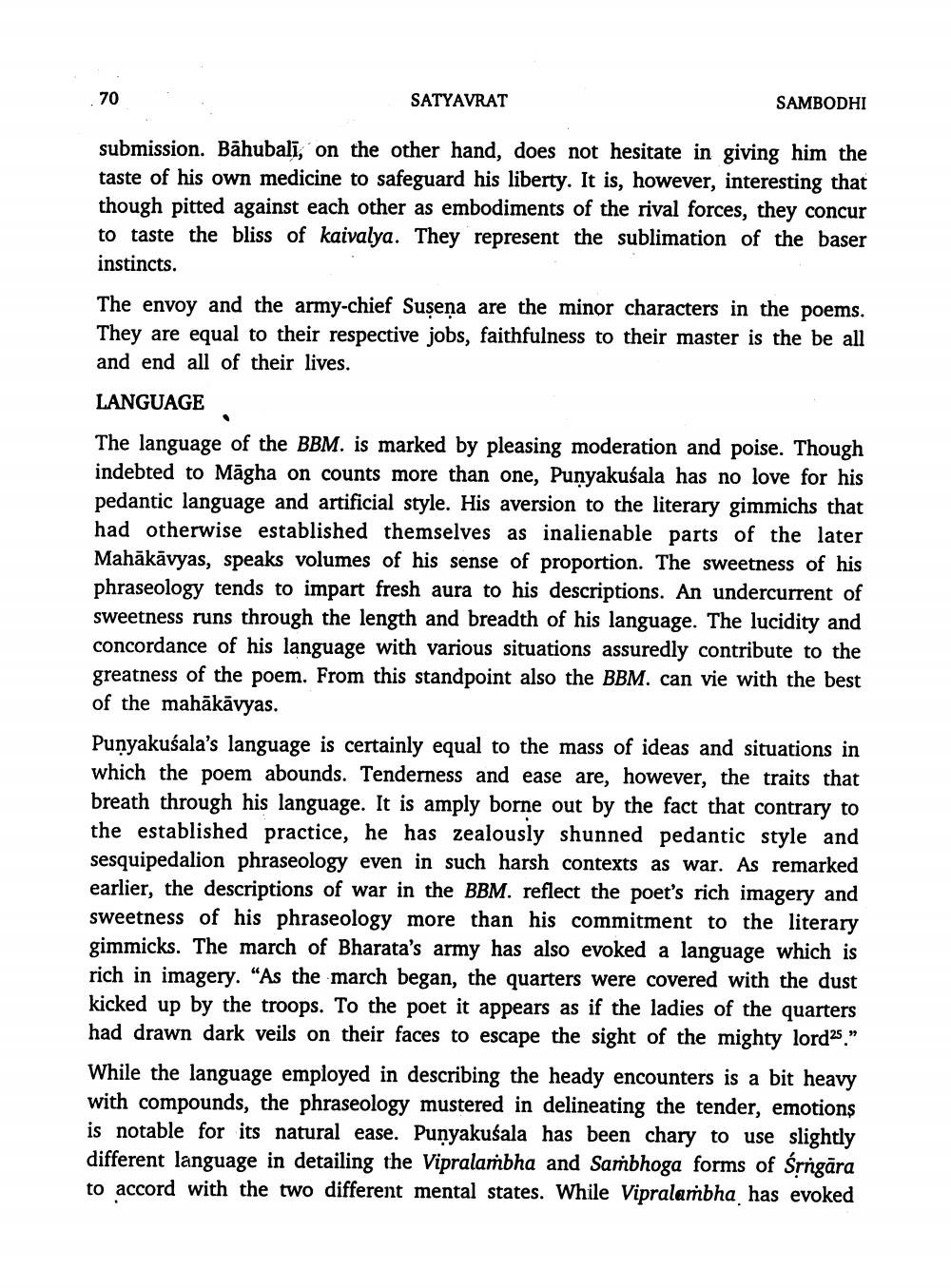________________
70
SATYAVRAT
SAMBODHI
submission. Bāhubalī, on the other hand, does not hesitate in giving him the taste of his own medicine to safeguard his liberty. It is, however, interesting that though pitted against each other as embodiments of the rival forces, they concur to taste the bliss of kaivalya. They represent the sublimation of the baser instincts.
The envoy and the army-chief Susena are the minor characters in the poems. They are equal to their respective jobs, faithfulness to their master is the be all and end all of their lives.
LANGUAGE The language of the BBM. is marked by pleasing moderation and poise. Though indebted to Māgha on counts more than one, Punyakusala has no love for his pedantic language and artificial style. His aversion to the literary gimmichs that had otherwise established themselves as inalienable parts of the later Mahäkävyas, speaks volumes of his sense of proportion. The sweetness of his phraseology tends to impart fresh aura to his descriptions. An undercurrent of sweetness runs through the length and breadth of his language. The lucidity and concordance of his language with various situations assuredly contribute to the greatness of the poem. From this standpoint also the BBM. can vie with the best of the mahākāvyas. Punyakusala's language is certainly equal to the mass of ideas and situations in which the poem abounds. Tenderness and ease are, however, the traits that breath through his language. It is amply borne out by the fact that contrary to the established practice, he has zealously shunned pedantic style and sesquipedalion phraseology even in such harsh contexts as war. As remarked earlier, the descriptions of war in the BBM. reflect the poet's rich imagery and sweetness of his phraseology more than his commitment to the literary gimmicks. The march of Bharata's army has also evoked a language which is rich in imagery. "As the march began, the quarters were covered with the dust kicked up by the troops. To the poet it appears as if the ladies of the quarters had drawn dark veils on their faces to escape the sight of the mighty lorda."
While the language employed in describing the heady encounters is a bit heavy with compounds, the phraseology mustered in delineating the tender, emotions is notable for its natural ease. Punyakušala has been chary to use slightly different language in detailing the Vipralambha and Sambhoga forms of Śrngära to accord with the two different mental states. While Vipralambha has evoked




